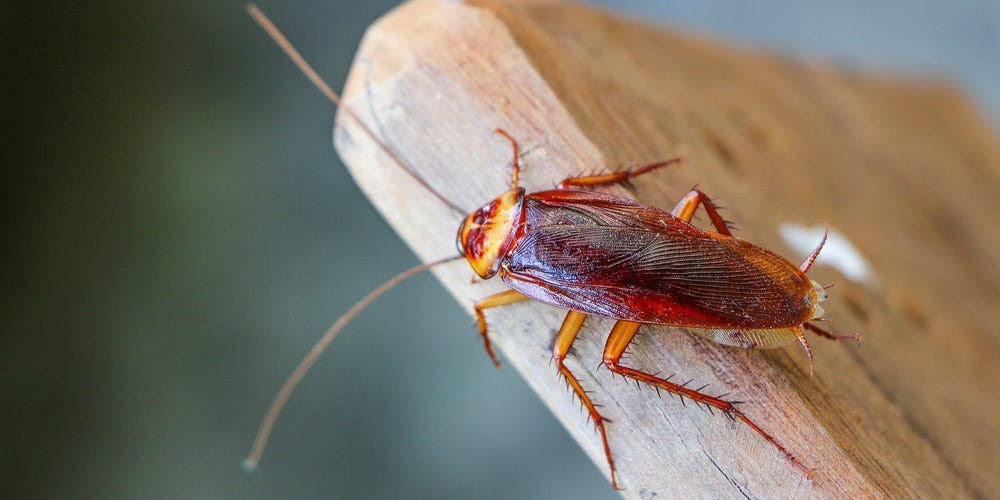Experts predict that one-third of Earth’s plants and animals — millions of species — could disappear by 2050 if the current rate of greenhouse gas emissions persists. And some are already disappearing.
But other animals are more resilient to temperature changes and habitat disruption. There are a few species that could not only survive but thrive in a warming world.
Climate models have shown that “we have a lot of species that might actually benefit from climate change,” expanding their ranges into new geographic areas that were previously inhospitable to them, Giovanni Strona, quantitative ecology researcher at the European Commission’s Joint Research Centre, told Business Insider.
Many of these climate change “winners” are hardy, fast-breeding scavengers that already live in some of the most degraded habitats on Earth: cities. They’re not all cute and cuddly, and some are considered pests that pose risks to human health.
Whether you like them or not, it doesn’t look like these four critters are going away any time soon.
Cockroaches probably won’t need to worry about a food shortage
Roaches are a city-dweller’s worst enemy. These indestructible insects can inhabit every corner of their urban environment, from the dredges of subway tunnels to skyrise apartments.
And once they’ve moved in, it’s extremely difficult to get rid of them. That’s because the humble cockroach has evolved to be one of the most resilient animals in the world.
These ancient arthropods have been around for over 300 million years, surviving every challenge they’ve faced. They even made it through the Cretaceous-Paleogene extinction, which eliminated 80% of Earth’s animal life.
What didn’t kill them only made them stronger. Cockroaches have lived through periods of extreme environmental change, including significant climatic shifts. They prefer hot, humid conditions, and can survive temperatures up to 120 degrees Fahrenheit.
What’s more, cockroaches can live for a month without food, and a week without water. When it comes to what they eat, they aren’t picky, which means they probably don’t have to worry about climate change eliminating their food source.
These characteristics and their long history of survival lead scientists to believe that cockroaches will do just fine in a warmer world, and perhaps even outlive humans.
Rats can probably evolve to tackle anything climate change throws their way
Like cockroaches, rats eat pretty much anything and can live almost anywhere. But the real source of their resilience is their adaptability.
Rats reproduce in massive numbers. They breed year-round, producing roughly six litters annually. The average litter size is eight to 18 pups, so that’s up to 108 rats a year from a single female.
Because of how rapidly they reproduce, rats evolve faster than many other mammals, adapting to changes in their environment or climate faster and more effectively.
Plus, there’s strength in numbers. Having lots and lots of babies means that rats can sustain large population numbers, so when challenges arise, there’s a greater chance that at least some individuals will survive.
Research has shown that rising global temperatures will only make it easier for rats to reproduce. Because as winters grow warmer, fewer rats will die from the cold, leaving more rats to reproduce year-round.
We’re already beginning to see their numbers increase worldwide. New York City’s rat population has increased by nearly one million over the last decade, M&M Pest Control estimated in 2023.
If climate change is driving a “ratpocalypse,” as some evidence suggests, that could have big consequences for human health.
Rats can carry diseases that are dangerous to humans, such as hantavirus, leptospirosis, and salmonella. If they thrive in a warming world, that means these diseases could too.
Mosquitos can grow faster in a warming world
Mosquitos aren’t just annoying, they’re also a major driver of disease worldwide.
These tiny bloodsuckers can carry a whole host of viruses and parasites, including malaria, dengue, Zika virus, and more. When transmitted to humans, these illnesses can be fatal. Each year, over one million people around the world die from mosquito-borne illnesses.
Mosquito-borne illness is most prevalent in Africa and tropic regions of southeast Asia and South America. That’s because mosquitos thrive in warm, wet climates.
But as climate change raises temperatures and alters precipitation trends, their range is expanding and shifting to new geographic areas. For example, a disease-carrying species of mosquito from South America appeared in Florida in 2021.
Additionally, studies have shown warmer temperatures can speed up a mosquito’s growth, biting rates, and the incubation of disease inside them.
This means that climate change could cause mosquito-borne illnesses to spread to new places, and increase case numbers worldwide. Some evidence suggests that we’re already seeing this happen.
In 2023, Florida and Texas saw their first cases of locally-transmitted malaria in 20 years. And In Europe, dengue outbreaks spiked significantly in 2022, largely driven by heat waves and flooding.
So, we can expect mosquitoes to stick around for a long time if warming continues.
Ticks are staying active year-round now that winters are more mild
Move over mosquitos, there’s another blood-sucking insect taking our warming world by storm.
Ticks thrive in warm, humid climates. They typically remain dormant during the winter, but as this season grows milder, they’re staying active year-round. They’re also emerging earlier and feeding longer throughout the year.
Additionally, warmer temperatures are expanding their range northward into areas where they were previously uncommon, including northeastern states such as Vermont.
That’s bad news for human health, because like mosquitos, ticks carry dangerous diseases. Lyme disease, anaplasmosis, and babesiosis are just a few examples of tick-borne illnesses. All three of them can become serious if left untreated.
In the US, cases of Lyme disease have nearly doubled since 1991, with the Northeast seeing the sharpest rise in cases. Studies suggest climate change has contributed significantly to this increase. And another 2023 study found that ticks are more resilient to extreme temperatures than scientists previously believed.
All of this suggests ticks are weathering climate change with little issue and they’ll likely stick around as temperatures continue to rise.
If you live in an area where ticks are present, it’s a good idea to take preventative measures against them year-round. And that goes for your pets too. But you should still be extra vigilant from April to September when ticks are most active.
Read the full article here
















